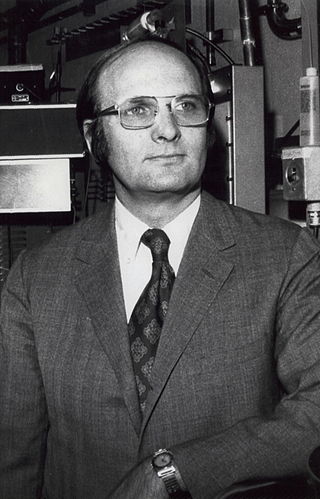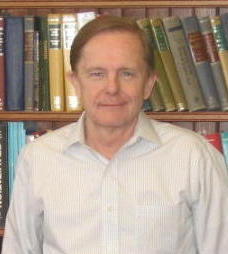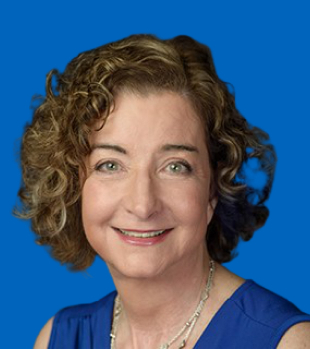Related Research Articles

John Robert Schrieffer was an American physicist who, with John Bardeen and Leon Cooper, was a recipient of the 1972 Nobel Prize in Physics for developing the BCS theory, the first successful quantum theory of superconductivity.
Nina Byers was a theoretical physicist, Research Professor and Professor of Physics emeritus in the Department of Physics and Astronomy, UCLA, and Fellow of Somerville College, Oxford.

John Robert Kirtley is an American condensed matter physicist and a Consulting Professor at the Center for Probing the Nanoscale in the Department of Applied Physics at Stanford University. He shared the 1998 Oliver E. Buckley Prize of the American Physical Society, and is a Fellow of both the American Physical Society and the American Association for the Advancement of Sciences.

Roy F. Schwitters was an American physicist who was professor of physics at the University of Texas at Austin. He was formerly a professor of physics at Harvard and Stanford, as well as director of the Superconducting Super Collider.
Watt Wetmore Webb was an American biophysicist, known for his co-invention of multiphoton microscopy in 1990.
Bascom Sine Deaver Jr. is a retired American physicist known for his research into superconductor applications, and a professor and assistant chairman for undergraduate studies of the physics department at the University of Virginia.

David R. Nelson is an American physicist, and Arthur K. Solomon Professor of Biophysics, at Harvard University.
William Martin Fairbank was an American physicist known in particular for his work on liquid helium.
Bertram Josef Richard Batlogg is an Austrian physicist known for his research on high-temperature superconductivity.

Robert Joseph Cava is a solid-state chemist at Princeton University where he holds the title Russell Wellman Moore Professor of Chemistry. Previously, Professor Cava worked as a staff scientist at Bell labs from 1979–1996, where earned the title of Distinguished Member of the Technical Staff. As of 2016 his research investigates topological insulators, semimetals, superconductors, frustrated magnets and thermoelectrics.

Thomas William Appelquist is a theoretical particle physicist who is the Eugene Higgins Professor of Physics at Yale University.
Arthur Foster Hebard is Distinguished Professor of Physics at University of Florida in Gainesville, Florida. He is particularly noted for leading the discovery of superconductivity in Buckminsterfullerene in 1991.

Laura H. Greene is the Marie Krafft Professor of Physics at Florida State University and Chief Scientist at the National High Magnetic Field Laboratory. She was previously a professor of physics at the University of Illinois at Urbana-Champaign. In September 2021, she was appointed to the President's Council of Advisors on Science and Technology (PCAST).
Julia Wan-Ping Hsu is an American materials scientist. In her research, she uses scanning probe microscopy to study the nanostructure, optics, and photoelectric properties of thin films and crystal surfaces, with particular application to solar cells, and has used nanotransfer printing to make electrical connections to single-molecule sensing devices. She is a professor of materials science and engineering at the University of Texas at Dallas, where she holds the Texas Instruments Distinguished Chair in Nanoelectronics.
Matthew P. A. Fisher is an American theoretical physicist and Professor of Physics at the University of California, Santa Barbara, and is known for several major contributions to condensed matter physics. He completed his bachelor's degree in engineering physics from Cornell University in 1981 and earned a Ph.D. in theoretical physics from the University of Illinois at Urbana-Champaign in 1986 with Anthony Leggett as his advisor, with part of his work done under the supervision of Eduardo Fradkin. He went on to become first a Visiting Scientist and then a Research Staff Member at IBM T. J. Watson Research Center (1986-1993). He joined the Kavli Institute for Theoretical Physics and the Physics Department of the University of California in 1993. In 2007 he joined Microsoft's Station Q as a research physicist, on leave from the UCSB physics department. During the academic year 2009-2010 he was on the faculty at Caltech, returning to the physics department at UCSB in summer 2010.
Aharon Kapitulnik is an Israeli-American experimental condensed matter physicist working at Stanford University. He is known primarily for his work on strongly correlated electron systems, low dimensional electronic systems, unconventional superconductors, topological superconductors, superconductivity and magnetism, transport in bad metals and precision measurements.
Nai Phuan Ong is an American experimental physicist, specializing in "condensed matter physics focusing on topological insulators, Dirac/Weyl semimetals, superconductors and quantum spin liquids."
Richard L. Greene is an American physicist. He is a distinguished university professor of Physics at the University of Maryland. He is known for his experimental research related to novel superconducting and magnetic materials.
Allen Marshall Goldman is an American experimental condensed matter physicist, known for his research on electronic transport properties of superconductors and for the eponymous Carlson-Goldman mode involving collective oscillations in superconductors.
Kazumi Maki was a Japanese theoretical physicist, known for his research in "superconductivity, superfluid ³He, and quasi‑one‑dimensional (1D) materials."
References
- 1 2 "Book of Members, 1780-2010: Chapter B" (PDF). American Academy of Arts and Sciences. Retrieved May 29, 2011.
- 1 2 "Beasley, Malcolm R." National Academy of Sciences. Retrieved May 29, 2011.
- 1 2 3 Manuel, Diane (October 7, 1998). "Malcolm Beasley new H&S dean". Stanford Report.
- ↑ "1957 Schoolboy All-Star Teams". The Washington Post. March 3, 1957. p. C3.
Malcolm (Mac) Beasley, Montgomery Blair, Forward, All-Metropolitan First Team
- ↑ "1958-59 Men's Basketball Roster". Cornell University Athletics. Retrieved 31 May 2019.
- ↑ "Malcolm R. Beasley". American Institute of Physics. February 7, 2014.
- ↑ Beasley, M. R. (January 1, 1968). "Thesis/Dissertation: Flux creep in hard superconductors. Report No. 921". Office of Scientific and Technical Information, U.S. Dept. of Energy, osti.gov.
- ↑ "Malcolm Roy Beasley". Physics Tree.
- ↑ "Malcolm Beasley, Stanford University: Candidate for Vice President". American Physical Society. Archived from the original on July 13, 2011. Retrieved May 29, 2011.
- ↑ Chang, Kenneth (September 26, 2002). "Panel Says Bell Labs Scientist Faked Discoveries in Physics". The New York Times.
- ↑ "Members Elect Beasley to the APS Presidential Line". APS News. No. August/September 2011. American Physical Society.